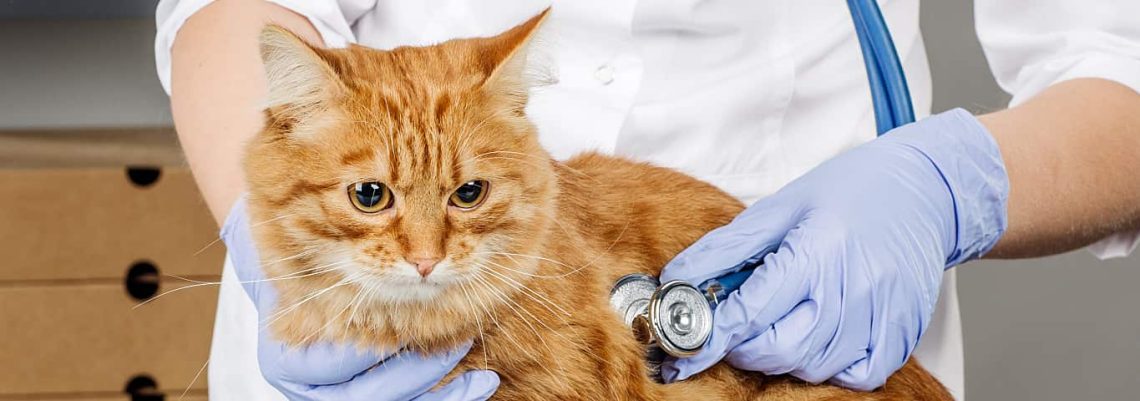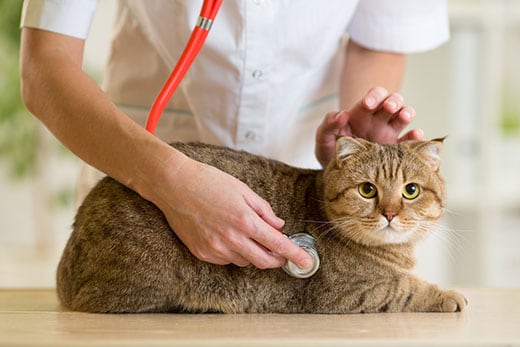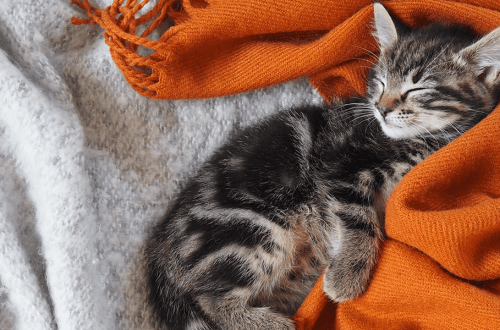
What is the normal temperature in cats and what vital signs should be monitored
Keeping a cat in excellent health is not always easy, especially if she is good at hiding illnesses. How to understand that the physiological parameters of a cat are not in order? Knowing the norm of temperature, pulse and breathing of the pet will help to be sure of his health.
Contents
Temperature, pulse, breathing in cats: what is the norm
Checking a cat’s vital signs at home is a way to assess its health, especially if the owner thinks something is wrong with her. The physiological norm for a fluffy pet are the following indicators:
- Body temperature 37,2–39,2 degrees Celsius
- breathing rate: an average of 20 to 30 breaths per minute
- heart rate: 160 to 180 beats per minute, depending on activity level, age, and fitness;
- arterial pressure 120 to 130 mmHg st
how to check a cat’s vital signs
The veterinarian will tell you exactly how to measure the temperature of the cat. Nevertheless, a small instruction will help assess the status of each of the four vital physiological indicators.
1. Temperature
There are two ways to measure the temperature of a domestic cat, but, unfortunately, she most likely will not like either of them. You can invite someone from the household who will hold the pet during these manipulations.
- Rectal. Rectal temperature is more accurate than ear temperature. If the owner decides to choose this method, the cat should be held comfortably by providing support for its hind legs. Lubricate the flexible tip of the rectal thermometer with a lubricant such as petroleum jelly. Then carefully insert the thermometer into the anus of the cat – only the very tip, so as not to injure her. The thermometer must be held steady until it beeps, and then carefully removed to view the reading.
- ear. To measure the temperature in the ear, you need a digital ear thermometer. The tool must be held carefully at an angle of 90 degrees so as not to damage the pet’s eardrum. When the thermometer beeps, carefully remove it and check the readings.
Fever, especially when combined with symptoms such as weakness, palpitations, and shortness of breath, may indicate a fever. A high body temperature in cats can indicate a bacterial infection, inflammation, or dehydration. You should immediately contact your veterinarian to get the correct diagnosis and recommendations for treatment.
2. Breathing rate
To assess the pet’s respiratory rate, you need to catch him in a calm state – he must sleep or be awake calmly, but just do not run. To measure breathing, you need a watch or a stopwatch on your smartphone. “Normal respiratory effort in a dog or cat at rest means that the animal’s ribcage on the sides rises and falls in a regular rhythm,” says Brewster Veterinary Hospital.
To assess it, you need to stand at a distance of 0,5–1 m from the cat in order to see both sides of its chest. After setting the timer, you should count the number of breaths taken by the cat to check if their number corresponds to the average. In this case, you need to make sure that her breathing is not difficult. You can gently place your hands on the cat’s chest to feel the rhythm of her breathing.
Veterinarians are renowned for their ability to “read” the respiratory rate simply by looking at the animal. But cats tend to be nervous during examinations, so their breathing can become faster, leading to a potentially inaccurate assessment. Videotaping a cat at rest at home can help a veterinarian better determine a normal breathing rate, researchers from the Department of Clinical Science of Companion Animals at Utrecht University in the Netherlands suggest.
According to the Cummings School of Veterinary Medicine at Tufts University, the two leading causes of difficulty breathing in cats are asthma and congestive heart failure. If your pet is experiencing shortness of breath, it is best to take him to an emergency clinic. Animals, like humans, are prone to upper respiratory infections, colds, and flu, so symptoms such as sneezing, runny nose, lethargy, and trouble breathing should be monitored.

3. Heart rate
There is a correlation between a cat’s heart rate and its blood pressure, so it’s easy to confuse the two. “Blood pressure is the force with which blood presses against the walls of blood vessels, and heart rate is the number of times the heart beats per minute,” explains the American Heart Association.
The best way to check a cat’s heart rate is to use a stethoscope – pet care experts advise seeing your veterinarian for this. However, you can check the cat’s heart rate per minute at home.
To do this, you need to carefully put your hands on the chest of a fluffy pet to feel her pulse. This will give you a general idea of whether her pulse is too fast, too slow, or normal.
If an owner notices irregular heartbeats, it could be due to a heart murmur, which is a sign of heart disease, researchers from the World Small Animal Veterinary Association explain. In this case, you need to make an appointment with a veterinarian.
4. Blood pressure
Instead of a stethoscope or blood pressure cuff, your veterinarian may use a Doppler probe to listen to your cat’s heart. Even if you have some of these devices at home, Cardiac Care for Pets recommends having your pet’s blood pressure checked by a veterinarian. This is especially important if the cat is older than 7 years old, is taking prescription drugs for heart disease, or is predisposed to heart problems.
Hypertension, or high blood pressure, is common in older cats and can affect other parts of the body, including the brain, nervous system, eyes and kidneys, notes International Cat Care. Early diagnosis of hypertension can slow its progression and increase the chances of curing any underlying disease.
Are vital signs the same for all cats?
Cats are predictably unpredictable creatures. The temperament, size and lifestyle of these animals can vary greatly. Although these factors affect the health of pets, their vital signs remain generally about the same.
Experts continue to study the question of which lifestyle is best for a cat’s health: outdoors or indoors. In a study published by The Royal Society Publishing, it was found that animals released outside were 2,77 times more likely to become infected with parasites than exclusively domestic animals. Because outdoor pets are more prone to infestation, they can get sick more often than their indoor counterparts.
Some breeds are simply more susceptible to disease than others. For example, Burmese cats and Maine Coons are more likely to have heart disease than other cat breeds. But, unlike dogs, vital signs in cats remain the same for everyone. In short, whether the furry beauty only lives indoors or goes outside, her vital signs should be within normal limits.
Why check the temperature, pulse and breathing of a cat
Measuring the cat’s vital signs will allow the owner to better understand the general state of his health and allay his worries. In addition, annual check-ups by a veterinarian are extremely important for maintaining the health of animals. Older pets should be examined twice a year, because as they age, changes in their bodies occur faster.
If a cat’s vital signs seem to be good – for example, a normal body temperature, no breathing problems, etc. – but there are suspicions that she is not feeling well, you should contact your veterinarian. No one knows a fluffy beauty better than her caring owner, so it is necessary to listen to intuition in any situation.
See also:
How to tell if a cat has a fever Can cats get colds or the flu? Heart Disease in Cats: How to Eat Right The Importance of Preventive Vet Visits with an Elderly Cat





